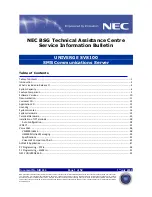
For more information about removing the NVDIMM-N, see the server maintenance and service guide on
the Hewlett Packard Enterprise website (
http://www.hpe.com/info/proliantgen10-docs
).
Processor issues
Troubleshooting the processor
Symptom
A POST error message or an IML message is received.
Cause
• One or more processors are not supported by the server.
• The processor configuration is not supported by the server.
• The server ROM is not current.
• A processor is not seated properly.
• A processor has failed.
Action
1.
Be sure that each processor is supported by the server and is installed as directed in the server
documentation.
The processor socket requires very specific installation steps and only supported processors should
be installed.
2.
Be sure the server ROM is current.
3.
Be sure that you are not mixing processor stepping, core speeds, or cache sizes if this is not
supported on the server.
4.
If the server has only one processor installed, reseat the processor.
If the issue is resolved after you restart the server, the processor was not installed properly.
5.
If the server has only one processor installed, replace it with a known functional processor.
If the issue is resolved after you restart the server, the original processor failed.
6.
If the server has multiple processors installed, test each processor:
a.
Remove all but one processor from the server.
Replace each with a processor terminator board or blank, if applicable to the server.
b.
Replace the remaining processor with a known functional processor.
If the issue is resolved after you restart the server, a fault exists with one or more of the original
processors. Install each processor one by one, restarting each time, to find the faulty processor or
processors. At each step, be sure the server supports the processor configurations.
More information
Product QuickSpecs on page 169
Server user guide on page 167
Processor issues
115
















































